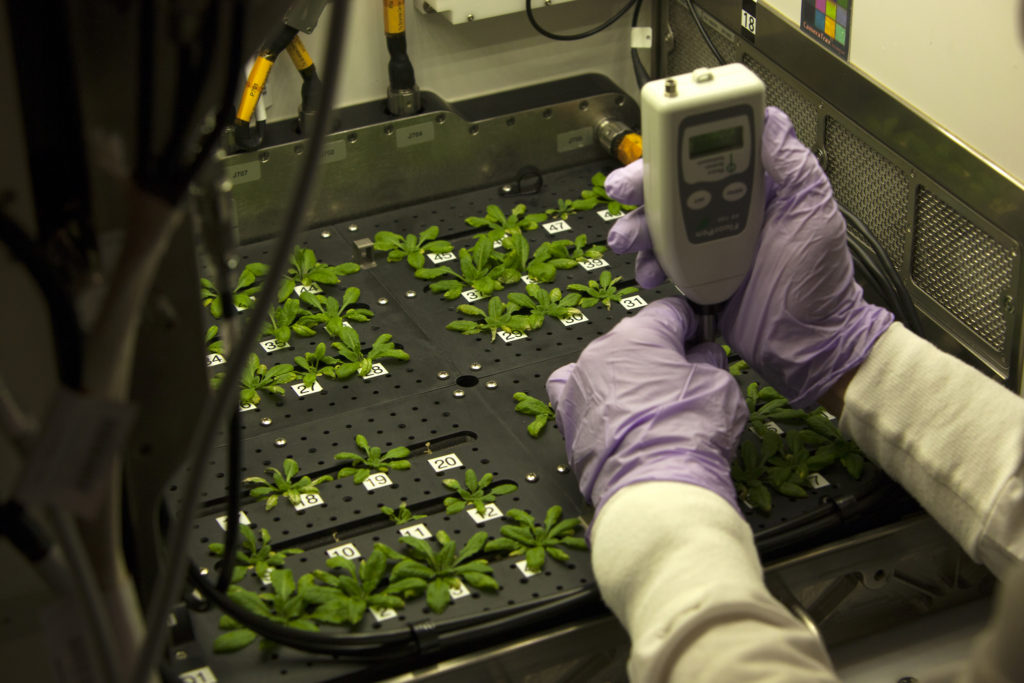
After a month of growing plants in the Advanced Plant Habitat Flight Unit No. 1, the chamber was opened and half of the yield was harvested by Kennedy Space Center payload engineers and scientists. The Arabidopsis thaliana seeds that were grown during the test are small flowering plants related to cabbage and mustard that have a short lifecycle and small genome, making it an ideal plant model for research.
The harvest involved measuring pigment molecules of some of the plants with an instrument called a FluorPen, which will give the principal investigators empirical data on the health of the plants. Following those measurements, the stems and the rosettes (circular arrangement of leaves) of the plants were harvested separately, placed inside a foil packet, and then placed inside a MiniCold Bag that quickly freezes the plants. The plants will be shipped to a team at Washington State University who will examine the plants, with the goal to comprehensively understand how these plants adapt to spaceflight during the PH-01 experiment on the International Space Station later this year.
The Advanced Plant Habitat was sent to the space station in two shipments on the Orbital ATK OA-7 and SpaceX CRS-11 resupply missions. The Advanced Plant Habitat will be set up on the space station this fall and is an enclosed, closed-loop system with an environmentally controlled chamber. The habitat will use red, blue, green and broad-spectrum white LED lights and have 180 sensors to relay information back to the team at Kennedy.
Support and funding for the Advanced Plant Habitat are provided by the Space Life and Physical Sciences Research and Applications Division.
